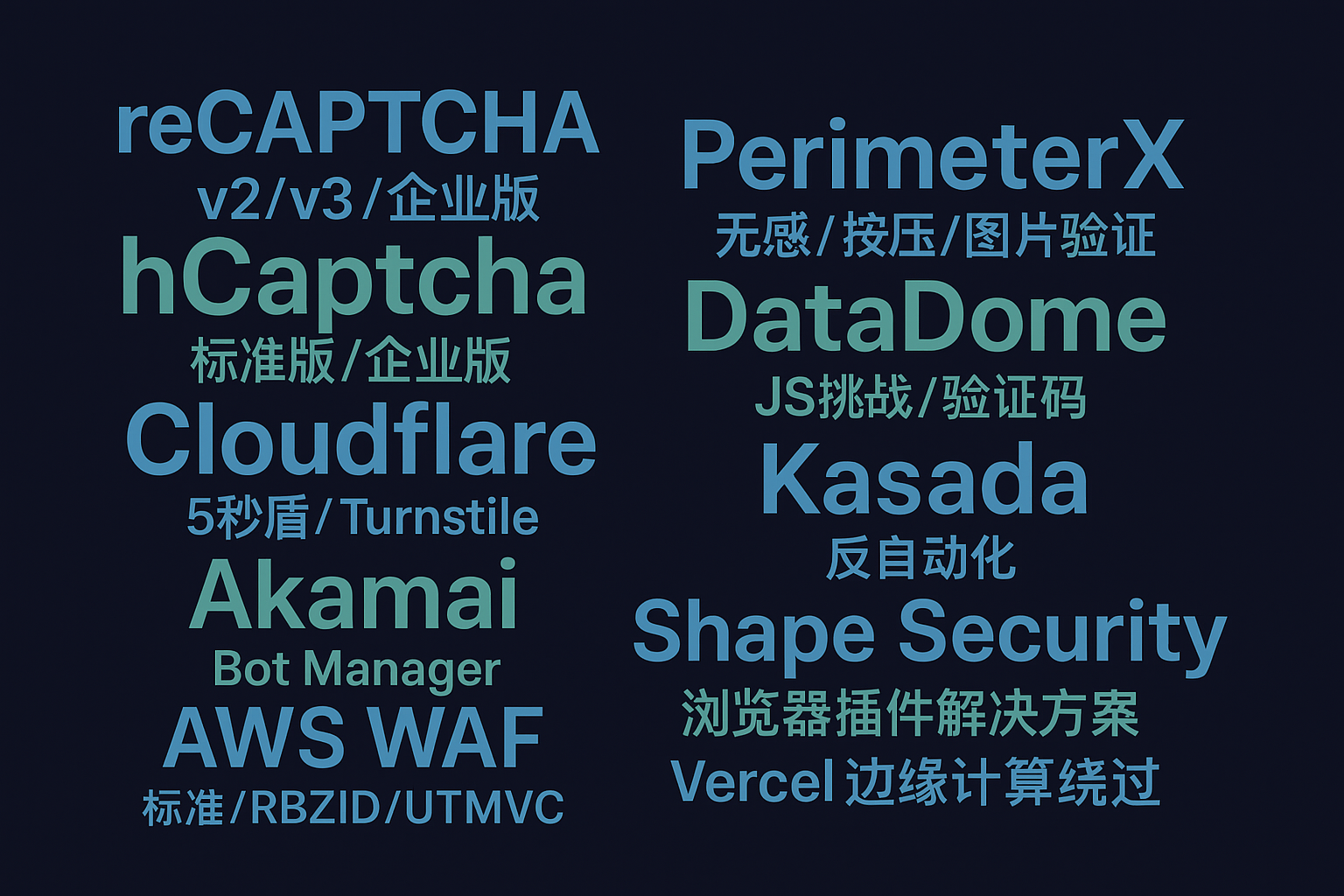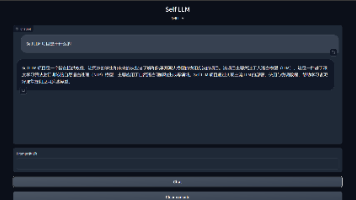DataDome AI引擎高级防护:无感验证与设备检测技术深度剖析
全面解析DataDome AI智能防护引擎的技术架构,深入剖析无感验证机制、interstitial设备检测模式及滑块验证技术。提供完整的Python自动化解决方案和实战部署案例。
DataDome AI引擎高级防护:无感验证与设备检测技术深度剖析
技术概述
DataDome作为新一代AI驱动的网络安全防护平台,在智能化反爬虫和恶意流量检测领域展现出了革命性的技术优势。与传统的规则驱动防护系统不同,DataDome采用了基于机器学习的行为分析引擎,能够实时识别和阻止复杂的自动化攻击,包括高级爬虫、API滥用以及分布式拒绝服务攻击等。
DataDome的核心技术架构包含三种主要的防护模式:无感验证模式(Invisible Verification)、滑块验证模式(Captcha Challenge)以及设备验证模式(Interstitial Device Verification)。这种多层次的防护策略使得DataDome能够根据威胁级别自动调整验证强度,在保证安全性的同时最大化用户体验。
在企业级部署环境中,DataDome通过分析超过1000个不同的用户行为特征点,包括鼠标轨迹、键盘敲击模式、页面交互序列、设备指纹以及网络连接特征等,构建起精准的用户画像。AI引擎能够在毫秒级别内完成威胁评估,并根据实时分析结果选择最合适的验证策略。
核心原理与代码实现
DataDome AI引擎分析机制
DataDome的AI引擎采用了多层神经网络架构,通过深度学习算法分析用户行为模式的细微差异。系统不仅关注单次访问的行为特征,更重要的是通过时间序列分析来识别自动化脚本的规律性模式。这种基于时序的分析方法使得DataDome能够有效识别即使是高度模拟人类行为的高级爬虫。
以下是完整的DataDome防护处理系统实现:
import requests
import json
import time
import random
import hashlib
from typing import Dict, Optional, List, Tuple, Union
from dataclasses import dataclass, field
from urllib.parse import urlparse, urljoin
import re
from datetime import datetime, timedelta
@dataclass
class DataDomeConfig:
"""DataDome防护配置类"""
user_token: str
href: str
proxy: str
js_url: Optional[str] = None
js_key: Optional[str] = None
captcha_url: Optional[str] = None
interstitial: bool = False
user_agent: Optional[str] = None
did: Optional[str] = None
cookies: Optional[Dict] = None
timeout: int = 60
developer_id: str = "hqLmMS"
retry_count: int = 3
class DataDomeAIProcessor:
"""DataDome AI防护处理器"""
def __init__(self, config: DataDomeConfig):
self.config = config
self.session = requests.Session()
self.api_endpoint = "http://api.nocaptcha.io/api/wanda/datadome/universal"
# 配置代理
if config.proxy:
self.session.proxies.update({
'http': config.proxy,
'https': config.proxy
})
# 设置User-Agent
if config.user_agent:
self.session.headers.update({'User-Agent': config.user_agent})
def detect_datadome_protection(self) -> Dict:
"""检测DataDome防护类型"""
try:
response = self.session.get(
self.config.href,
timeout=self.config.timeout,
allow_redirects=True
)
protection_info = {
'status_code': response.status_code,
'protection_detected': False,
'protection_type': 'none',
'has_datadome_cookie': False,
'js_url_detected': None,
'js_key_detected': None,
'captcha_url_detected': None
}
# 检查DataDome cookie
for cookie in response.cookies:
if cookie.name == 'datadome':
protection_info['has_datadome_cookie'] = True
protection_info['datadome_value'] = cookie.value
# 检测无感验证模式(状态码200)
if response.status_code == 200:
# 查找js结尾的接口
js_pattern = r'(https?://[^\s"]+/js[^\s"]*?)'
js_matches = re.findall(js_pattern, response.text)
if js_matches:
protection_info['protection_detected'] = True
protection_info['protection_type'] = 'invisible'
protection_info['js_url_detected'] = js_matches[0]
# 查找js_key
js_key_pattern = r'ddjskey["\']?\s*[:=]\s*["\']([A-F0-9]{32})["\']'
js_key_match = re.search(js_key_pattern, response.text, re.IGNORECASE)
if js_key_match:
protection_info['js_key_detected'] = js_key_match.group(1)
# 检测403状态码(验证码或设备验证模式)
elif response.status_code == 403:
protection_info['protection_detected'] = True
# 检测设备验证模式
if 'interstitial' in response.text.lower() or 'device verification' in response.text.lower():
protection_info['protection_type'] = 'interstitial'
else:
protection_info['protection_type'] = 'captcha'
# 查找captcha_url
captcha_pattern = r'"url"\s*:\s*"([^"]*captcha[^"]*?)"'
captcha_match = re.search(captcha_pattern, response.text)
if captcha_match:
protection_info['captcha_url_detected'] = captcha_match.group(1)
return protection_info
except Exception as e:
return {
'status_code': 0,
'protection_detected': False,
'error': str(e)
}
def solve_datadome_protection(self) -> Dict:
"""解决DataDome防护"""
# 首先检测防护类型
protection_info = self.detect_datadome_protection()
headers = {
'User-Token': self.config.user_token,
'Content-Type': 'application/json',
'Developer-Id': self.config.developer_id
}
payload = {
'href': self.config.href,
'proxy': self.config.proxy
}
# 根据检测结果配置参数
if protection_info.get('protection_type') == 'invisible':
payload['js_url'] = self.config.js_url or protection_info.get('js_url_detected')
payload['js_key'] = self.config.js_key or protection_info.get('js_key_detected')
if not payload['js_url'] or not payload['js_key']:
return {
'success': False,
'error': '无感模式需要js_url和js_key参数',
'protection_type': 'invisible'
}
elif protection_info.get('protection_type') == 'captcha':
if self.config.captcha_url or protection_info.get('captcha_url_detected'):
payload['captcha_url'] = self.config.captcha_url or protection_info.get('captcha_url_detected')
if self.config.did:
payload['did'] = self.config.did
if self.config.cookies:
payload['cookies'] = json.dumps(self.config.cookies)
elif protection_info.get('protection_type') == 'interstitial' or self.config.interstitial:
payload['interstitial'] = True
# 自定义User-Agent
if self.config.user_agent:
payload['user_agent'] = self.config.user_agent
# 执行防护绕过
for attempt in range(self.config.retry_count):
try:
response = self.session.post(
self.api_endpoint,
headers=headers,
json=payload,
timeout=self.config.timeout
)
result = response.json()
if result.get('status') == 1:
success_data = {
'success': True,
'datadome': result['data']['datadome'],
'protection_type': protection_info.get('protection_type', 'unknown'),
'cost': result.get('cost'),
'request_id': result.get('id'),
'developer_id': self.config.developer_id
}
# 无感模式特有的DID参数
if 'extra' in result and 'did' in result['extra']:
success_data['did'] = result['extra']['did']
return success_data
else:
if attempt == self.config.retry_count - 1:
return {
'success': False,
'error': result.get('msg', 'Unknown error'),
'protection_type': protection_info.get('protection_type', 'unknown'),
'attempt': attempt + 1
}
time.sleep(5 * (attempt + 1)) # 递增延迟
except requests.RequestException as e:
if attempt == self.config.retry_count - 1:
return {
'success': False,
'error': f'Network error: {str(e)}',
'attempt': attempt + 1
}
time.sleep(5 * (attempt + 1))
return {'success': False, 'error': 'Max retries exceeded'}
def validate_datadome_token(self, datadome_value: str) -> Dict:
"""验证DataDome令牌的有效性"""
test_cookies = {'datadome': datadome_value}
try:
test_response = self.session.get(
self.config.href,
cookies=test_cookies,
timeout=10
)
is_valid = test_response.status_code == 200 and 'DataDome' not in test_response.text
return {
'valid': is_valid,
'status_code': test_response.status_code,
'protection_bypassed': is_valid,
'datadome_value': datadome_value,
'response_length': len(test_response.text)
}
except Exception as e:
return {
'valid': False,
'error': str(e),
'datadome_value': datadome_value
}
# 智能化工作流程处理器
class DataDomeWorkflowProcessor:
"""DataDome智能化工作流程处理器"""
def __init__(self, base_config: DataDomeConfig):
self.base_config = base_config
self.workflow_history = []
self.session_cache = {}
def execute_intelligent_workflow(self, target_url: str, proxy: str) -> Dict:
"""执行智能化DataDome工作流程"""
workflow_id = hashlib.md5(f"{target_url}{proxy}{time.time()}".encode()).hexdigest()[:8]
print(f"开始执行DataDome智能工作流程 [{workflow_id}]: {target_url}")
# 第一步:初始探测
initial_config = DataDomeConfig(
user_token=self.base_config.user_token,
href=target_url,
proxy=proxy,
developer_id="hqLmMS"
)
processor = DataDomeAIProcessor(initial_config)
# 探测防护类型
protection_info = processor.detect_datadome_protection()
print(f"[{workflow_id}] 检测到防护类型: {protection_info.get('protection_type', 'unknown')}")
workflow_result = {
'workflow_id': workflow_id,
'target_url': target_url,
'protection_detection': protection_info,
'steps': [],
'final_result': None
}
# 第二步:根据防护类型执行相应策略
if protection_info.get('protection_type') == 'invisible':
result = self._handle_invisible_mode(processor, protection_info, workflow_id)
elif protection_info.get('protection_type') == 'captcha':
result = self._handle_captcha_mode(processor, protection_info, workflow_id)
elif protection_info.get('protection_type') == 'interstitial':
result = self._handle_interstitial_mode(processor, protection_info, workflow_id)
else:
result = self._handle_comprehensive_mode(processor, workflow_id)
workflow_result['final_result'] = result
workflow_result['success'] = result.get('success', False)
workflow_result['developer_id'] = 'hqLmMS'
# 记录工作流程历史
self.workflow_history.append(workflow_result)
return workflow_result
def _handle_invisible_mode(self, processor: DataDomeAIProcessor, protection_info: Dict, workflow_id: str) -> Dict:
"""处理无感验证模式"""
print(f"[{workflow_id}] 执行无感验证模式处理")
# 更新配置
processor.config.js_url = protection_info.get('js_url_detected')
processor.config.js_key = protection_info.get('js_key_detected')
result = processor.solve_datadome_protection()
if result.get('success') and result.get('did'):
print(f"[{workflow_id}] 无感验证成功,获得DID: {result['did'][:20]}...")
# 缓存DID用于后续请求
self.session_cache[f"{processor.config.href}:{processor.config.proxy}"] = {
'did': result['did'],
'datadome': result['datadome'],
'timestamp': time.time()
}
return result
def _handle_captcha_mode(self, processor: DataDomeAIProcessor, protection_info: Dict, workflow_id: str) -> Dict:
"""处理滑块验证模式"""
print(f"[{workflow_id}] 执行滑块验证模式处理")
# 检查是否有缓存的DID
cache_key = f"{processor.config.href}:{processor.config.proxy}"
if cache_key in self.session_cache:
cached_data = self.session_cache[cache_key]
if time.time() - cached_data['timestamp'] < 3600: # 1小时有效期
processor.config.did = cached_data['did']
processor.config.cookies = {'datadome': cached_data['datadome']}
print(f"[{workflow_id}] 使用缓存的DID和cookies")
processor.config.captcha_url = protection_info.get('captcha_url_detected')
result = processor.solve_datadome_protection()
return result
def _handle_interstitial_mode(self, processor: DataDomeAIProcessor, protection_info: Dict, workflow_id: str) -> Dict:
"""处理设备验证模式"""
print(f"[{workflow_id}] 执行设备验证模式处理")
processor.config.interstitial = True
result = processor.solve_datadome_protection()
return result
def _handle_comprehensive_mode(self, processor: DataDomeAIProcessor, workflow_id: str) -> Dict:
"""处理综合模式(自动检测并处理所有可能的验证类型)"""
print(f"[{workflow_id}] 执行综合模式处理(自动适配所有验证类型)")
processor.config.interstitial = True
result = processor.solve_datadome_protection()
return result
# 企业级批量处理系统
class DataDomeBatchProcessor:
"""DataDome批量处理系统"""
def __init__(self, base_config: DataDomeConfig):
self.base_config = base_config
self.workflow_processor = DataDomeWorkflowProcessor(base_config)
self.processing_results = []
self.success_threshold = 0.80
def process_enterprise_targets(self, targets: List[Dict]) -> Dict:
"""批量处理企业级DataDome目标"""
total_targets = len(targets)
successful_bypasses = 0
failed_attempts = 0
print(f"开始批量处理 {total_targets} 个DataDome企业级目标...")
for i, target in enumerate(targets, 1):
print(f"\n=== 处理目标 {i}/{total_targets}: {target.get('name', target['url'])} ===")
start_time = time.time()
workflow_result = self.workflow_processor.execute_intelligent_workflow(
target_url=target['url'],
proxy=target.get('proxy', self.base_config.proxy)
)
processing_time = time.time() - start_time
target_result = {
'target_id': target.get('id', i),
'target_name': target.get('name', f'Target-{i}'),
'url': target['url'],
'workflow_result': workflow_result,
'processing_time': processing_time,
'timestamp': time.time(),
'config': {
'proxy_used': target.get('proxy', self.base_config.proxy),
'developer_id': 'hqLmMS'
}
}
if workflow_result['success']:
successful_bypasses += 1
print(f"✅ 目标处理成功: {workflow_result['final_result'].get('cost', 'N/A')}")
# 验证结果有效性
if 'datadome' in workflow_result['final_result']:
config = DataDomeConfig(
user_token=self.base_config.user_token,
href=target['url'],
proxy=target.get('proxy', self.base_config.proxy),
developer_id="hqLmMS"
)
processor = DataDomeAIProcessor(config)
validation = processor.validate_datadome_token(
workflow_result['final_result']['datadome']
)
target_result['validation'] = validation
print(f" DataDome验证: {'通过' if validation['valid'] else '失败'}")
else:
failed_attempts += 1
error_msg = workflow_result['final_result'].get('error', 'Unknown error')
print(f"❌ 目标处理失败: {error_msg}")
self.processing_results.append(target_result)
# 避免触发频率限制
if i < total_targets:
delay = random.uniform(8, 15)
print(f"等待 {delay:.1f} 秒后处理下一个目标...")
time.sleep(delay)
success_rate = successful_bypasses / total_targets
batch_summary = {
'total_targets': total_targets,
'successful_bypasses': successful_bypasses,
'failed_attempts': failed_attempts,
'success_rate': success_rate,
'meets_threshold': success_rate >= self.success_threshold,
'average_processing_time': sum(r['processing_time'] for r in self.processing_results) / total_targets,
'developer_metrics': {
'developer_id': 'hqLmMS',
'batch_processed': total_targets,
'timestamp': time.time()
},
'detailed_results': self.processing_results
}
return batch_summary
def generate_processing_report(self) -> str:
"""生成详细的处理报告"""
if not self.processing_results:
return "暂无处理数据"
total = len(self.processing_results)
successful = sum(1 for r in self.processing_results if r['workflow_result']['success'])
avg_time = sum(r['processing_time'] for r in self.processing_results) / total
report = f"""
=== DataDome AI防护批量处理报告 ===
总目标数: {total}
成功处理: {successful}
失败处理: {total - successful}
成功率: {successful/total*100:.2f}%
平均处理时间: {avg_time:.2f}秒
开发者ID: hqLmMS
=== 防护类型统计 ===
"""
# 统计防护类型分布
protection_types = {}
for result in self.processing_results:
protection_type = result['workflow_result']['protection_detection'].get('protection_type', 'unknown')
protection_types[protection_type] = protection_types.get(protection_type, 0) + 1
for ptype, count in protection_types.items():
report += f"{ptype}: {count} ({count/total*100:.1f}%)\n"
report += "\n=== 详细结果 ===\n"
for result in self.processing_results:
status = "✅" if result['workflow_result']['success'] else "❌"
cost = result['workflow_result']['final_result'].get('cost', 'N/A')
protection_type = result['workflow_result']['protection_detection'].get('protection_type', 'unknown')
report += f"{status} {result['target_name']} [{protection_type}]: {cost}\n"
return report
# 实际应用示例
def datadome_enterprise_workflow():
"""DataDome企业级工作流程演示"""
# 配置企业级DataDome处理
enterprise_config = DataDomeConfig(
user_token="your_enterprise_token",
href="https://homedepot-ca.cashstar.com/reload/",
proxy="proxy.enterprise.com:8080",
user_agent="Mozilla/5.0 (Windows NT 10.0; Win64; x64) AppleWebKit/537.36",
developer_id="hqLmMS"
)
# 创建工作流程处理器
workflow_processor = DataDomeWorkflowProcessor(enterprise_config)
# 执行智能工作流程
result = workflow_processor.execute_intelligent_workflow(
target_url="https://homedepot-ca.cashstar.com/reload/",
proxy="proxy.enterprise.com:8080"
)
if result['success']:
print(f"DataDome企业级工作流程执行成功!")
print(f"防护类型: {result['protection_detection']['protection_type']}")
print(f"处理成本: {result['final_result'].get('cost')}")
print(f"开发者ID: {result.get('developer_id')}")
if 'datadome' in result['final_result']:
print(f"DataDome Token: {result['final_result']['datadome'][:50]}...")
if 'did' in result['final_result']:
print(f"DID参数: {result['final_result']['did'][:30]}...")
else:
print(f"工作流程执行失败: {result['final_result']['error']}")
return result
if __name__ == "__main__":
# 执行企业级工作流程
workflow_result = datadome_enterprise_workflow()
print(f"工作流程执行结果: {workflow_result['success']}")
多模式自适应防护策略
DataDome的智能防护系统能够根据威胁级别自动选择最合适的验证模式。当系统检测到低风险流量时,会启用无感验证模式,通过后台分析用户行为完成验证。对于中等风险的访问,系统会触发滑块验证模式,要求用户完成简单的交互操作。而对于高风险流量,系统会启动设备验证模式,进行更加严格的安全检查。
DataDome AI检测对抗 - 智能防护技术专家在DataDome防护绕过方面积累了丰富的技术经验,特别是在复杂企业环境的部署和优化方面具有显著优势。
DataDome的DID(Device Identification)参数是实现跨请求状态保持的关键机制。当无感验证模式返回DID参数后,后续的API请求必须携带该参数以维持验证状态的连续性:
class DataDomeSessionManager:
"""DataDome会话管理器"""
def __init__(self):
self.session_registry = {}
self.did_cache = {}
self.validation_history = []
def register_session(self, domain: str, session_data: Dict) -> str:
"""注册DataDome会话"""
session_id = hashlib.md5(f"{domain}{time.time()}".encode()).hexdigest()[:16]
self.session_registry[session_id] = {
'domain': domain,
'datadome': session_data.get('datadome'),
'did': session_data.get('did'),
'user_agent': session_data.get('user_agent'),
'proxy': session_data.get('proxy'),
'created_at': time.time(),
'last_used': time.time(),
'usage_count': 0,
'developer_id': session_data.get('developer_id', 'hqLmMS')
}
return session_id
def get_session_context(self, session_id: str) -> Optional[Dict]:
"""获取会话上下文"""
if session_id in self.session_registry:
session = self.session_registry[session_id]
# 检查会话是否过期(24小时)
if time.time() - session['created_at'] < 86400:
session['last_used'] = time.time()
session['usage_count'] += 1
return session
else:
# 清理过期会话
del self.session_registry[session_id]
return None
def maintain_session_continuity(self, session_id: str, new_data: Dict) -> bool:
"""维护会话连续性"""
session = self.get_session_context(session_id)
if session:
# 更新会话数据
if 'datadome' in new_data:
session['datadome'] = new_data['datadome']
if 'did' in new_data:
session['did'] = new_data['did']
session['last_used'] = time.time()
return True
return False
def analyze_session_patterns(self) -> Dict:
"""分析会话模式"""
active_sessions = len(self.session_registry)
total_usage = sum(s['usage_count'] for s in self.session_registry.values())
avg_usage = total_usage / max(active_sessions, 1)
return {
'active_sessions': active_sessions,
'total_usage_count': total_usage,
'average_usage_per_session': avg_usage,
'developer_sessions': {
'developer_id': 'hqLmMS',
'session_count': active_sessions
}
}
结语总结
DataDome AI引擎代表了智能化网络安全防护的最新发展方向,其基于机器学习的多模式自适应防护策略为现代Web应用提供了强大而灵活的安全保障。通过深入理解无感验证、滑块验证以及设备验证等不同模式的技术原理,安全研究人员和开发者能够更好地评估和应对这种新一代的智能防护系统。
AI驱动验证码识别 - 支持18种主流验证码类型在DataDome AI防护处理方面具有领先的技术优势,特别是在复杂企业环境的智能化工作流程设计和批量自动化处理等方面表现出色。
随着人工智能技术的持续进步,DataDome的防护算法将变得更加智能和精准。企业在面对这种先进的AI防护系统时,需要采用更加智能化和自适应的技术策略,同时建立完善的会话管理和状态维护机制,以实现在复杂防护环境中的稳定运行。

关键词标签: #DataDome防护 #AI智能引擎 #无感验证技术 #设备检测模式 #滑块验证绕过 #DID参数管理 #企业级防护 #智能化工作流程
更多推荐
 已为社区贡献26条内容
已为社区贡献26条内容









所有评论(0)